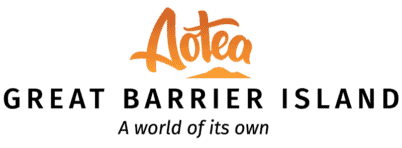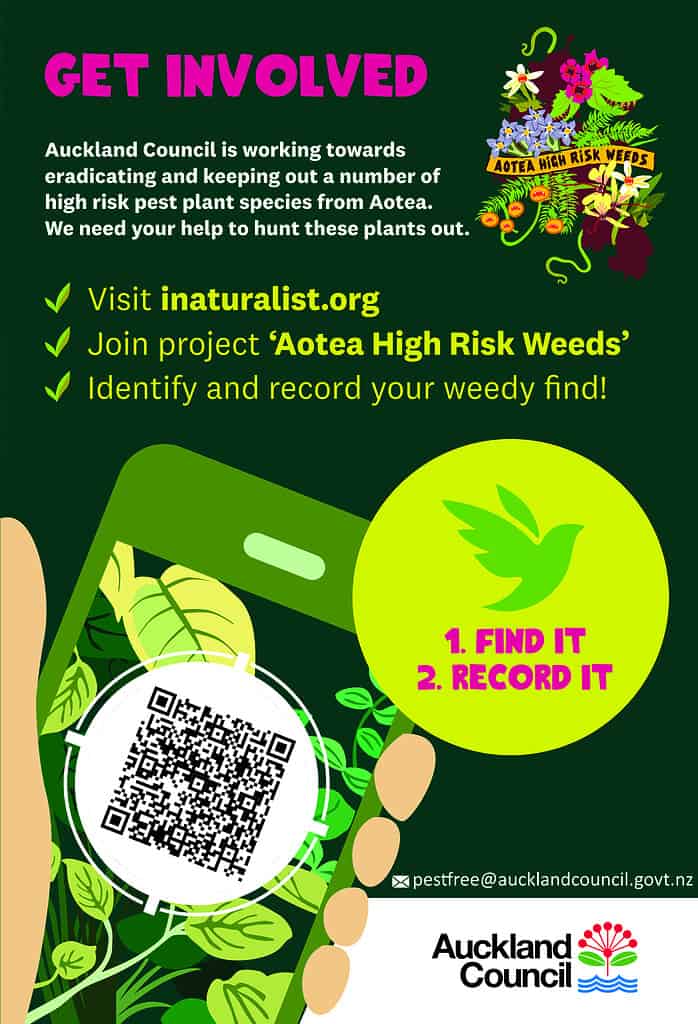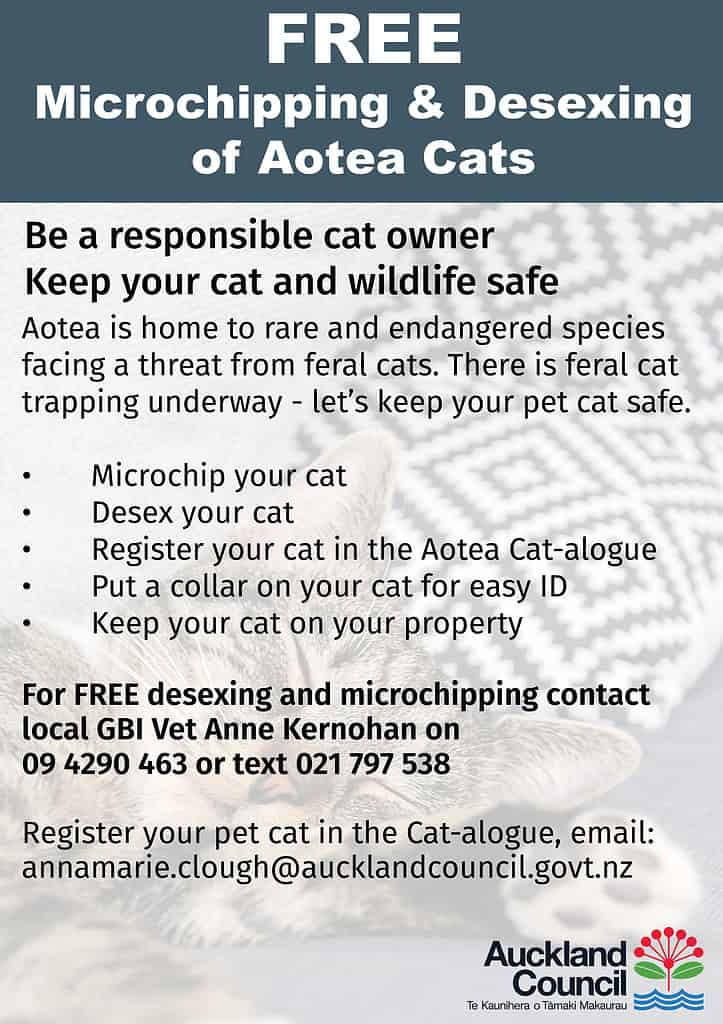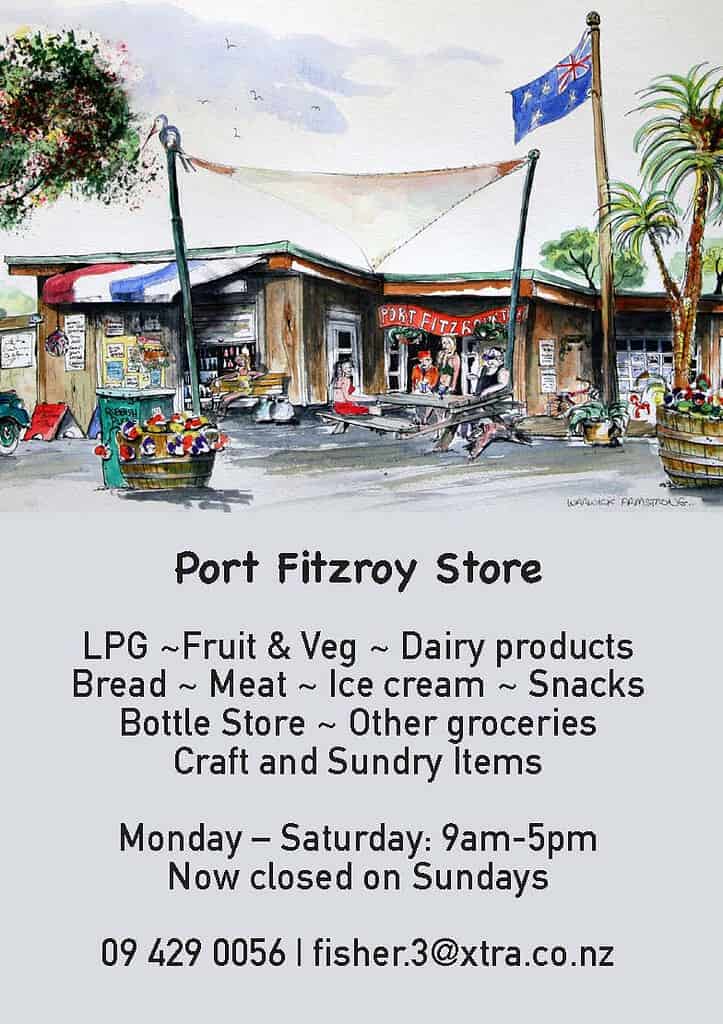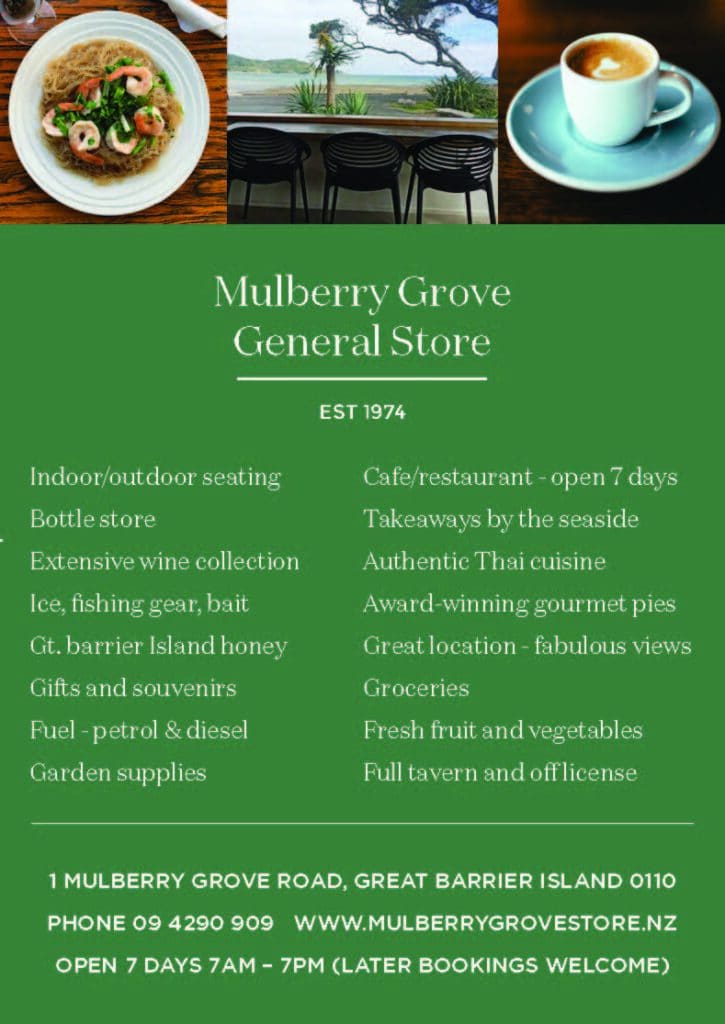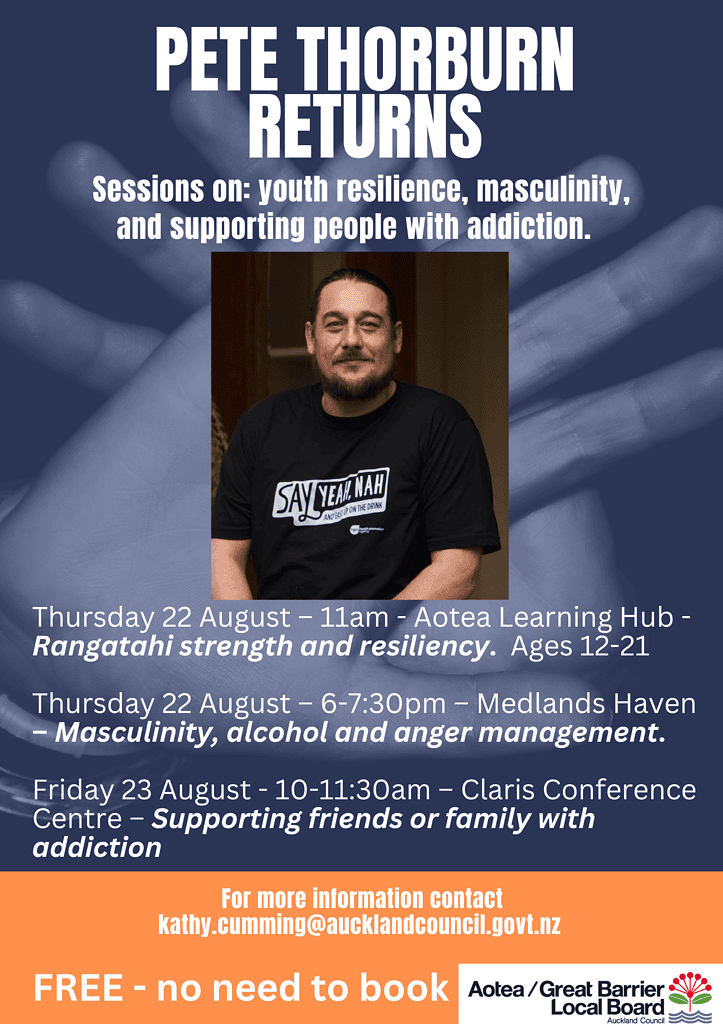In July, we hosted three conservation volunteers for a few days on Aotea to support the planting of over 700 trees.
Amy Dent, a marine biologist, and Tejo Schie a retired physio doing full-time conservation volunteering including guiding on Tiritiri Matangi. It was Amy’s first time on the island and Tejo hadn’t visited for more than 30 years. They were joined by Andrea Oberg, a visitor centre Ranger/Kaitiaki Manuhiri and Hut Warden host who is normally found helping people visiting the Tongariro National Park.

Our DOC team welcomed the manuhiri with a mihi whakatau (an informal Māori welcoming ceremony), but sadly the weather did not — torrential rain for two days! We used the rainy time to complete inside jobs such as making the cardboard cages to protect the saplings from the wind and rabbits.
As the rain subsided, we headed out to plant 70 pōhutukawa trees at Awana Beach campsite – these hearty trees will provide shelter and shade for the campers in years to come.
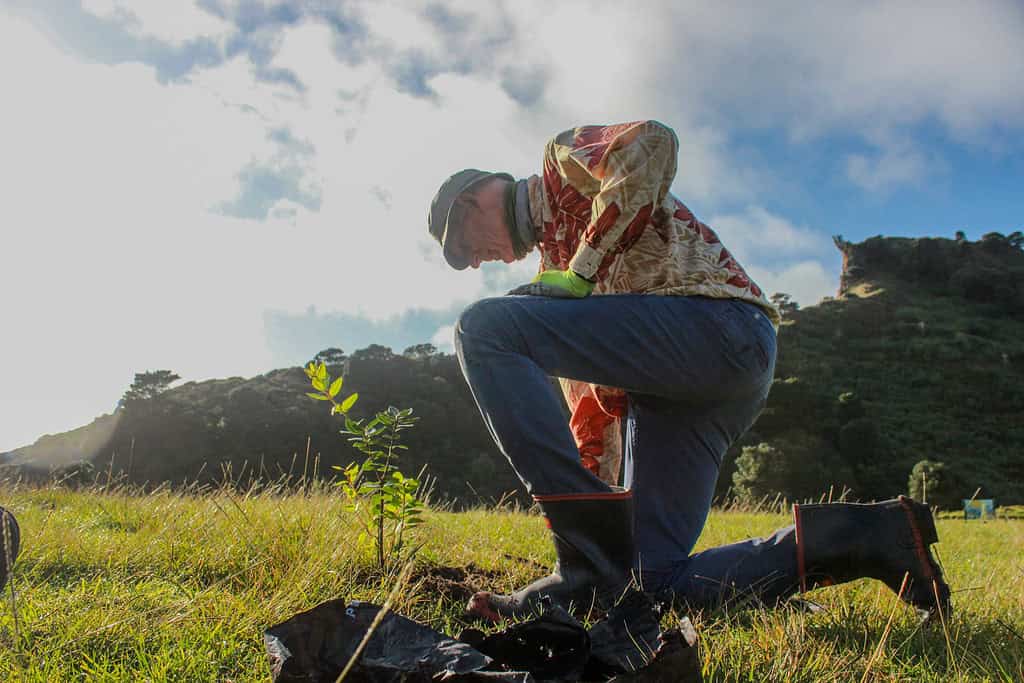
Following that we planted a whopping 687 mixed native trees at Woolshed wetland in Okiwi. The 23 different species of plants we have grown for the wetland help build up a better habitat for pāteke to roost and take shelter from pūkeko and harriers. Over the years, the area has become a home for other native bird species – the threatened matuku-hūrepo/Australasian bittern, kakariki and tūi.
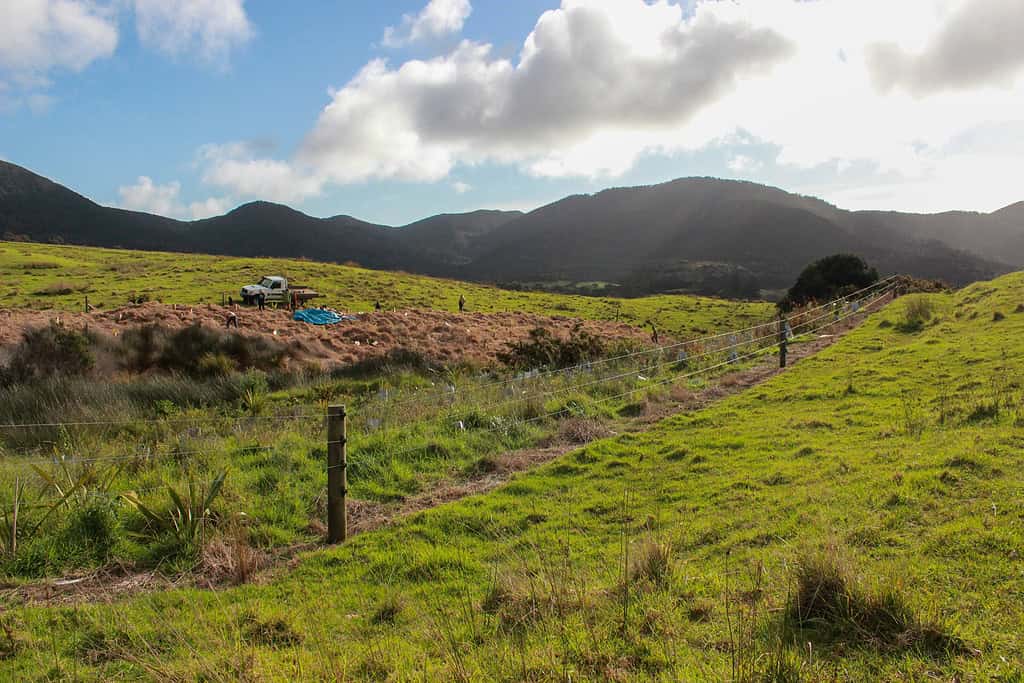
In total our team of six planted 757 trees!
All seeds are eco sourced from Aotea and locally grown in our nursery by our DOC biodiversity rangers. Our nursery plants support two campgrounds, wetland areas and around the DOC office.
Here are some of the plants we grow: Māhoe, Tī Kōuka, Kahikatea, Pūriri, Harakeke, Parapara, Pōhutakawa, Coprosma robusta, Coprosma Grandifolia, Coprosma Lucida, Porokaiwhiri, Kawakawa, Koromiko, Māpou, Five finger, Coastal five finger, Tōtara, Taraire, Karaka, Mānuka, Kōwhai, Nīkau.
The volunteers were stoked to be visiting Aotea. On top of volunteering, they explored the island’s many beaches and tracks – and all of them would love to come again next year.
Photos taken by Luke Thornborough, Supervisor at Department of Conservation.
Words by Cara Fraider, Department of Conservation
